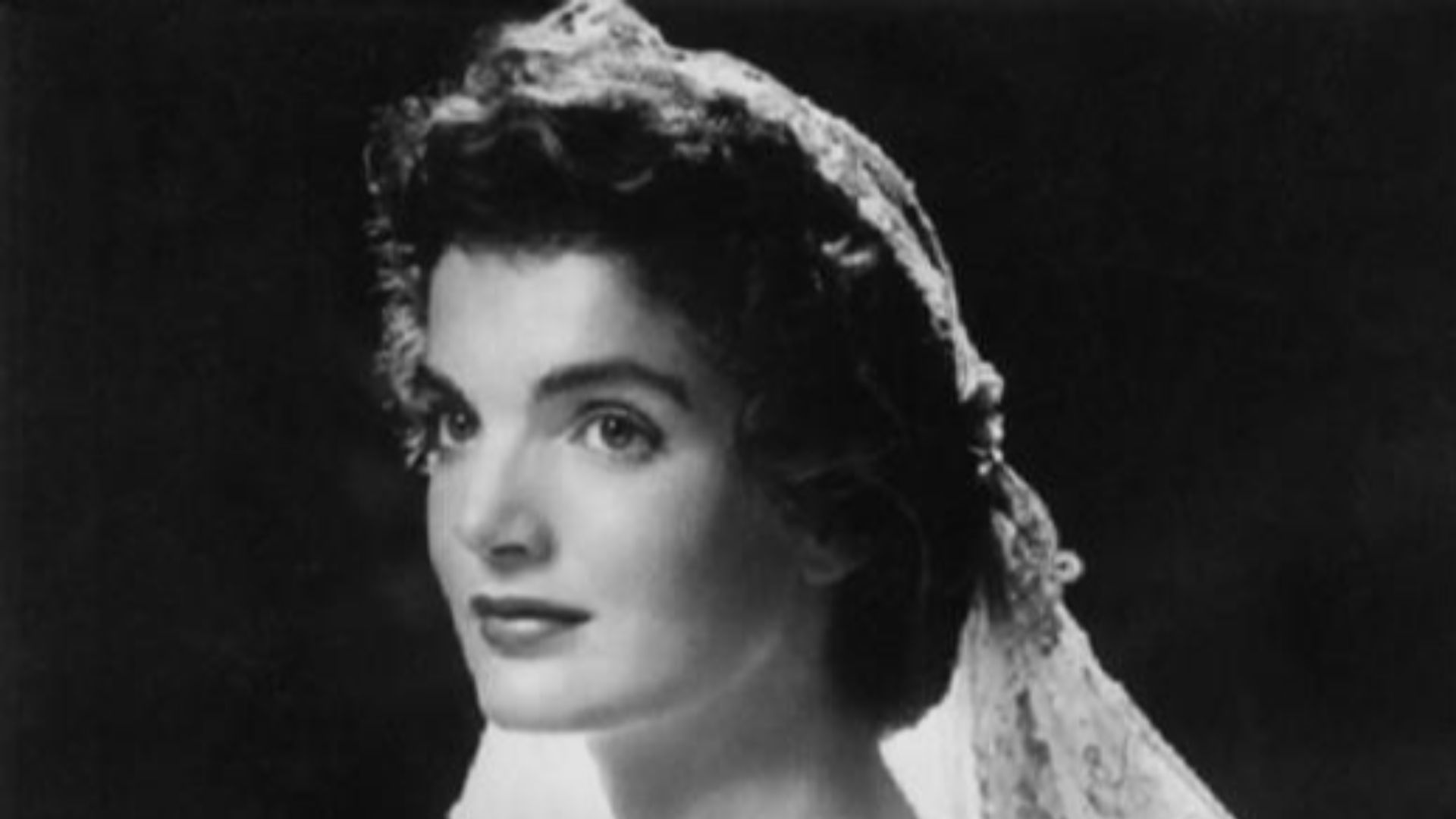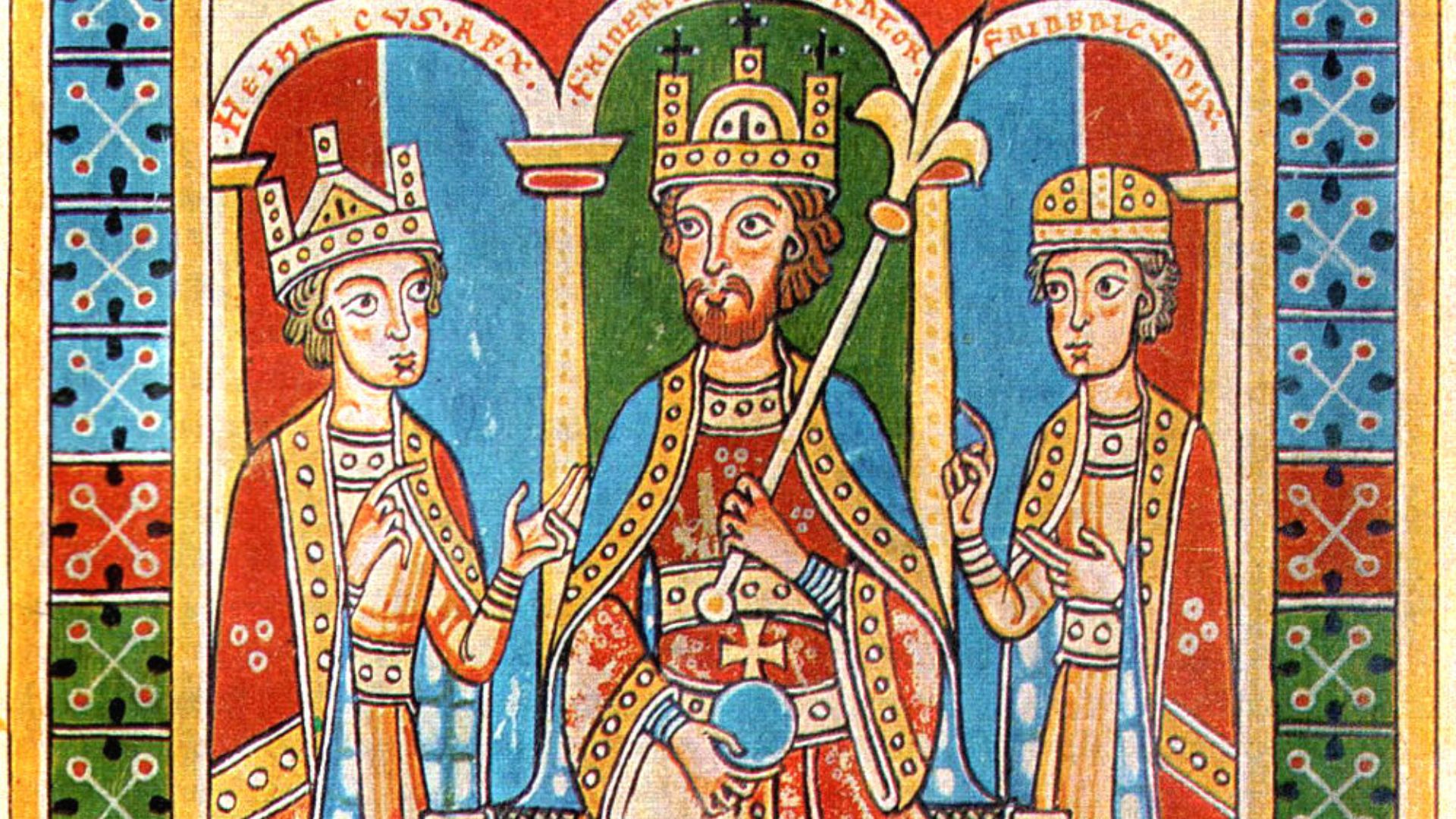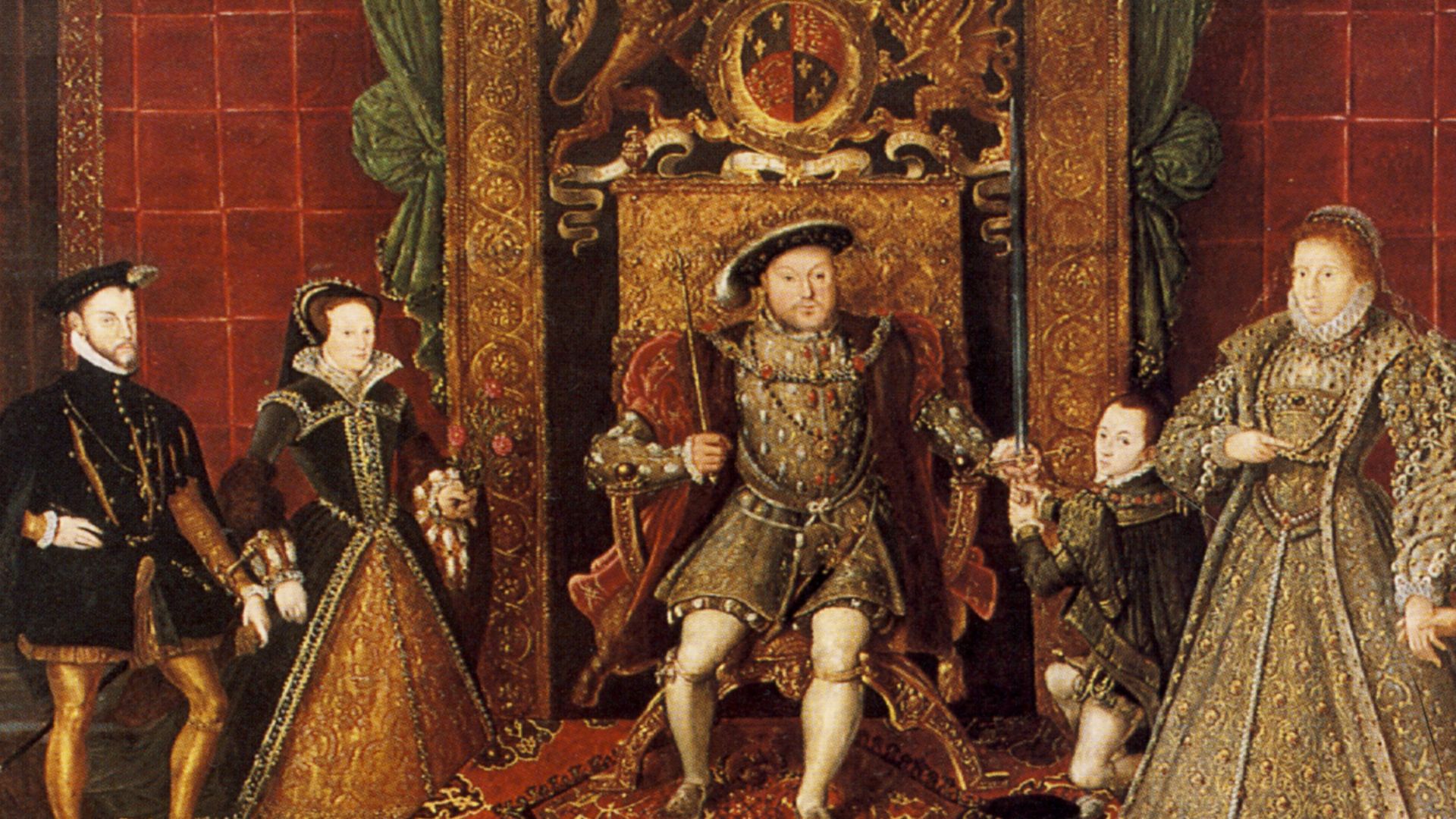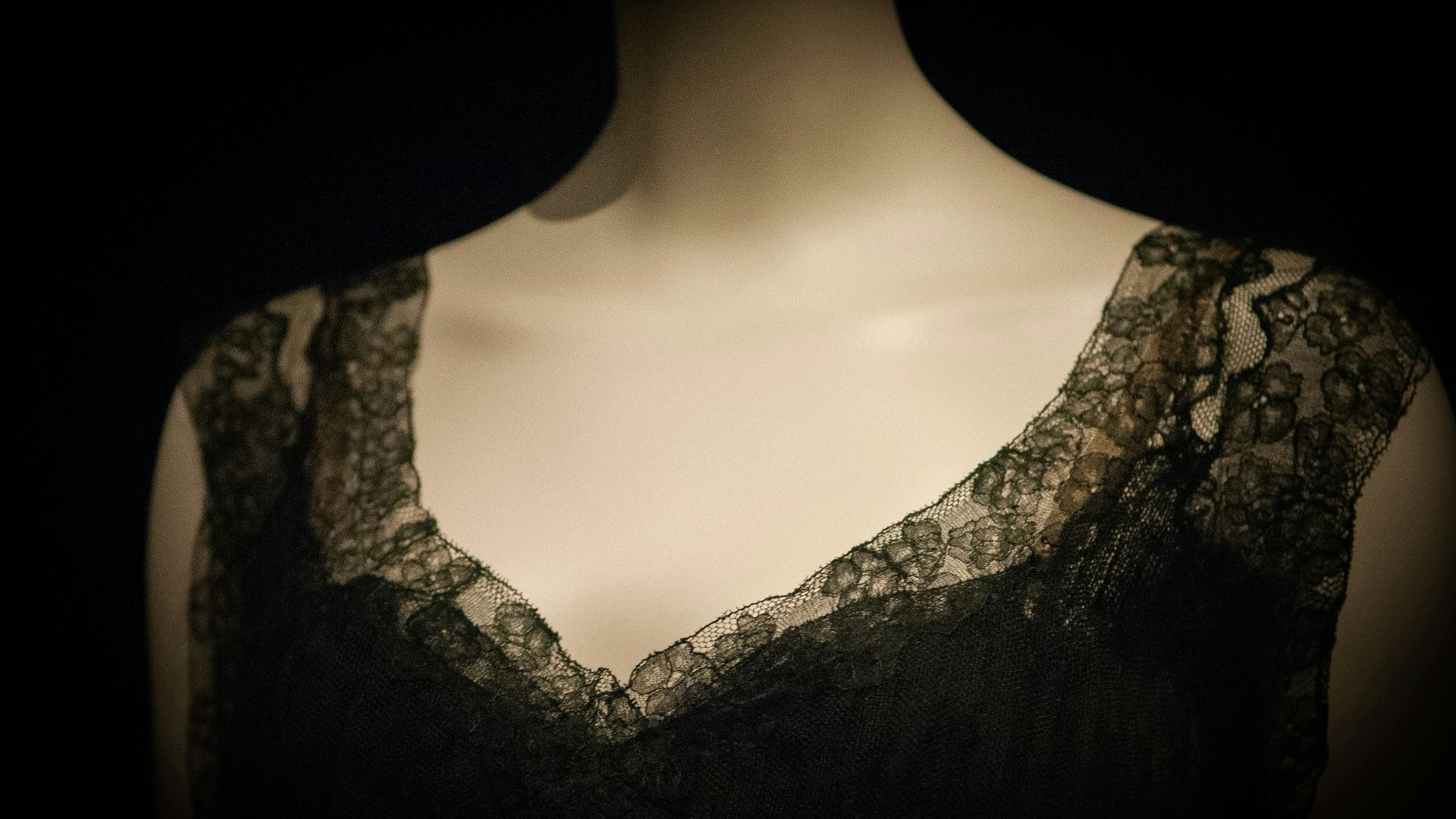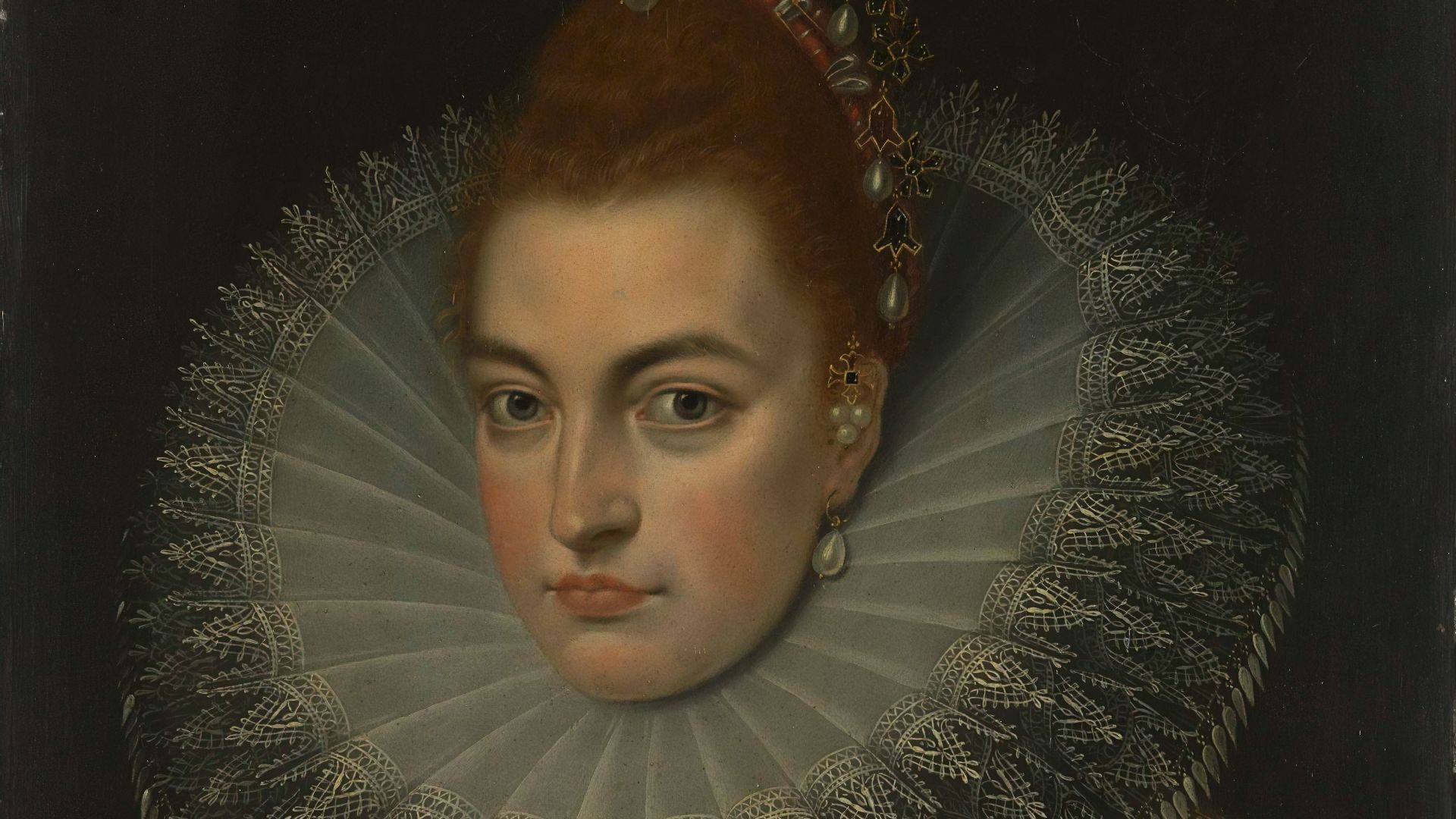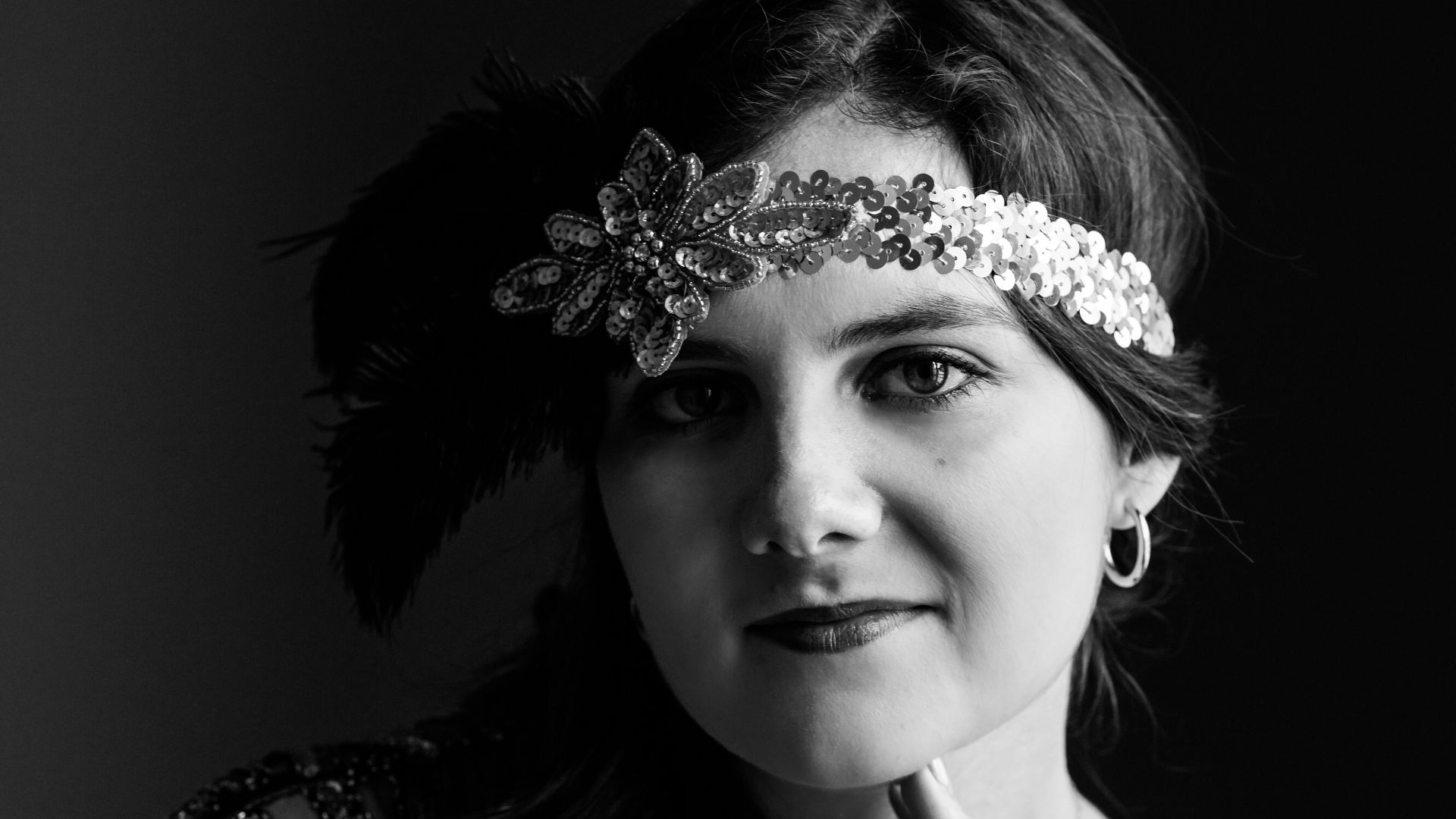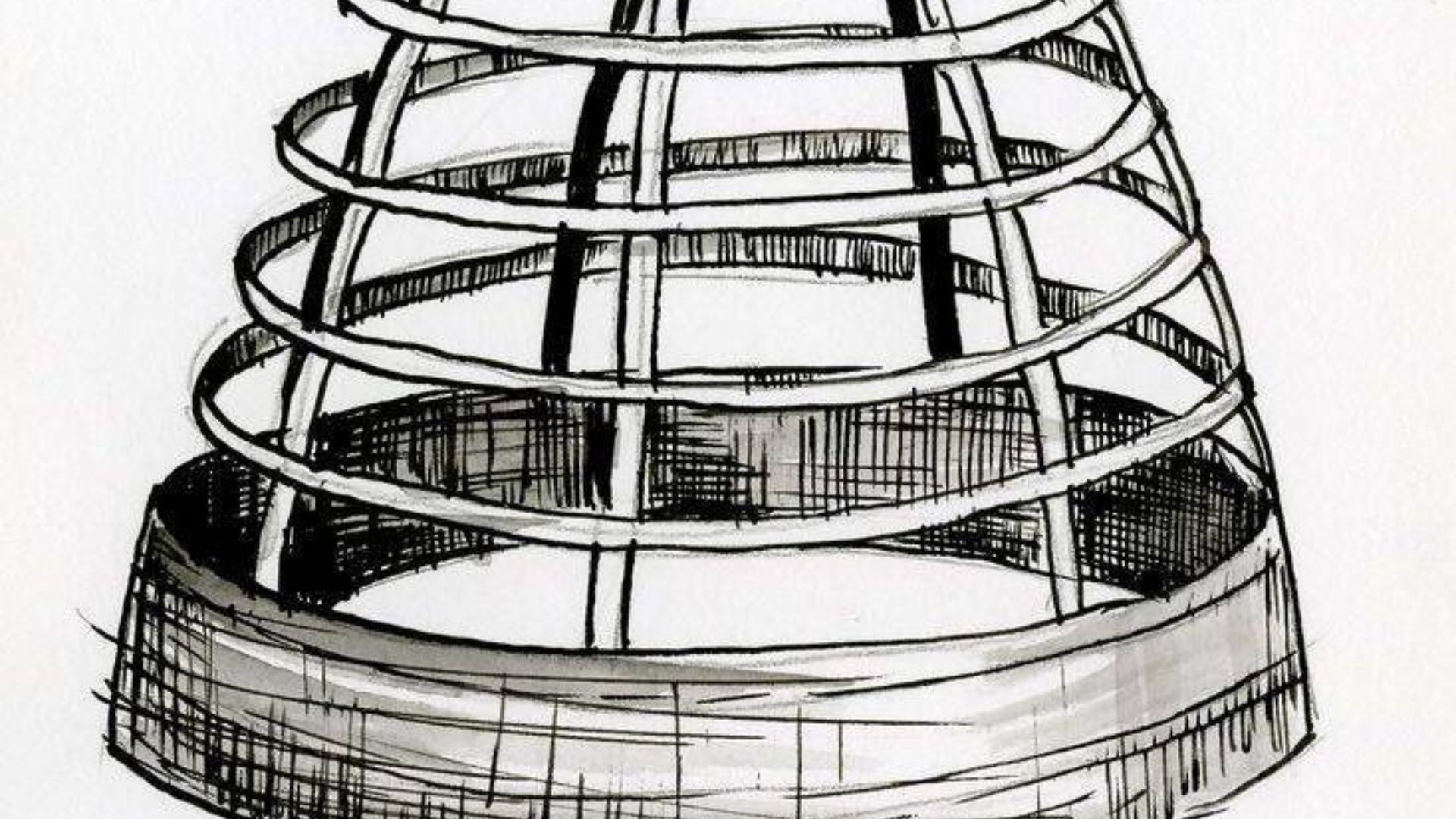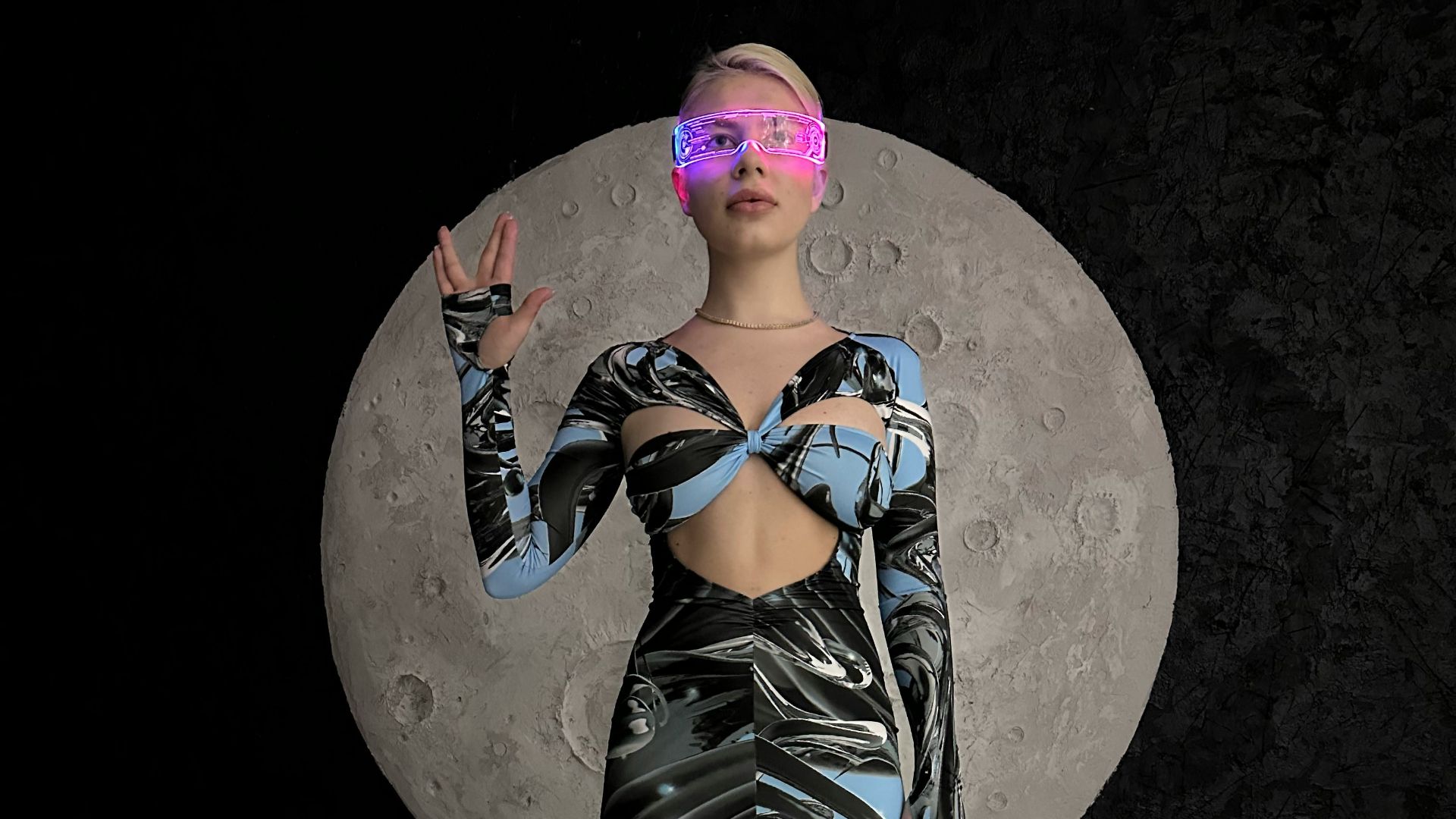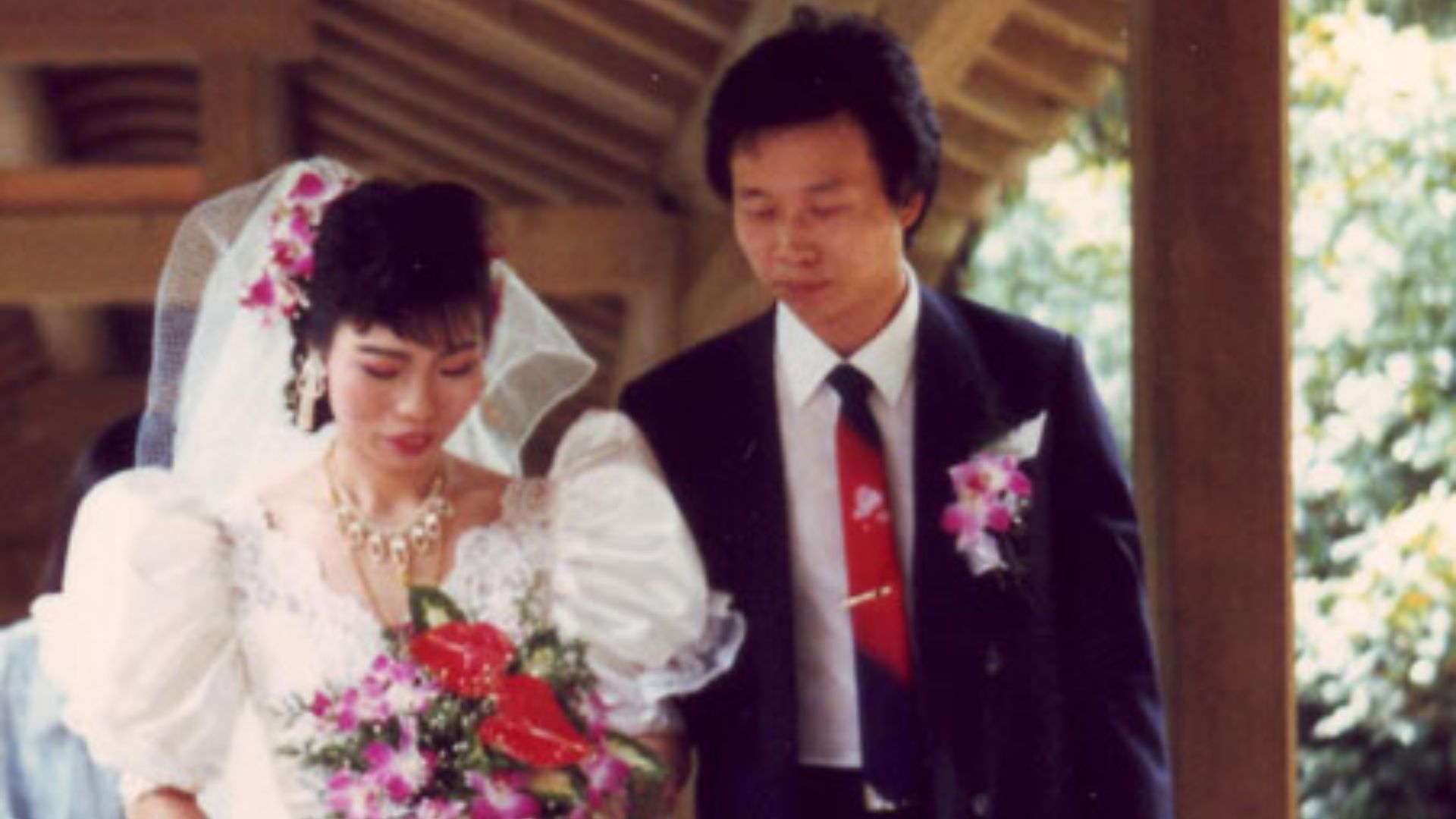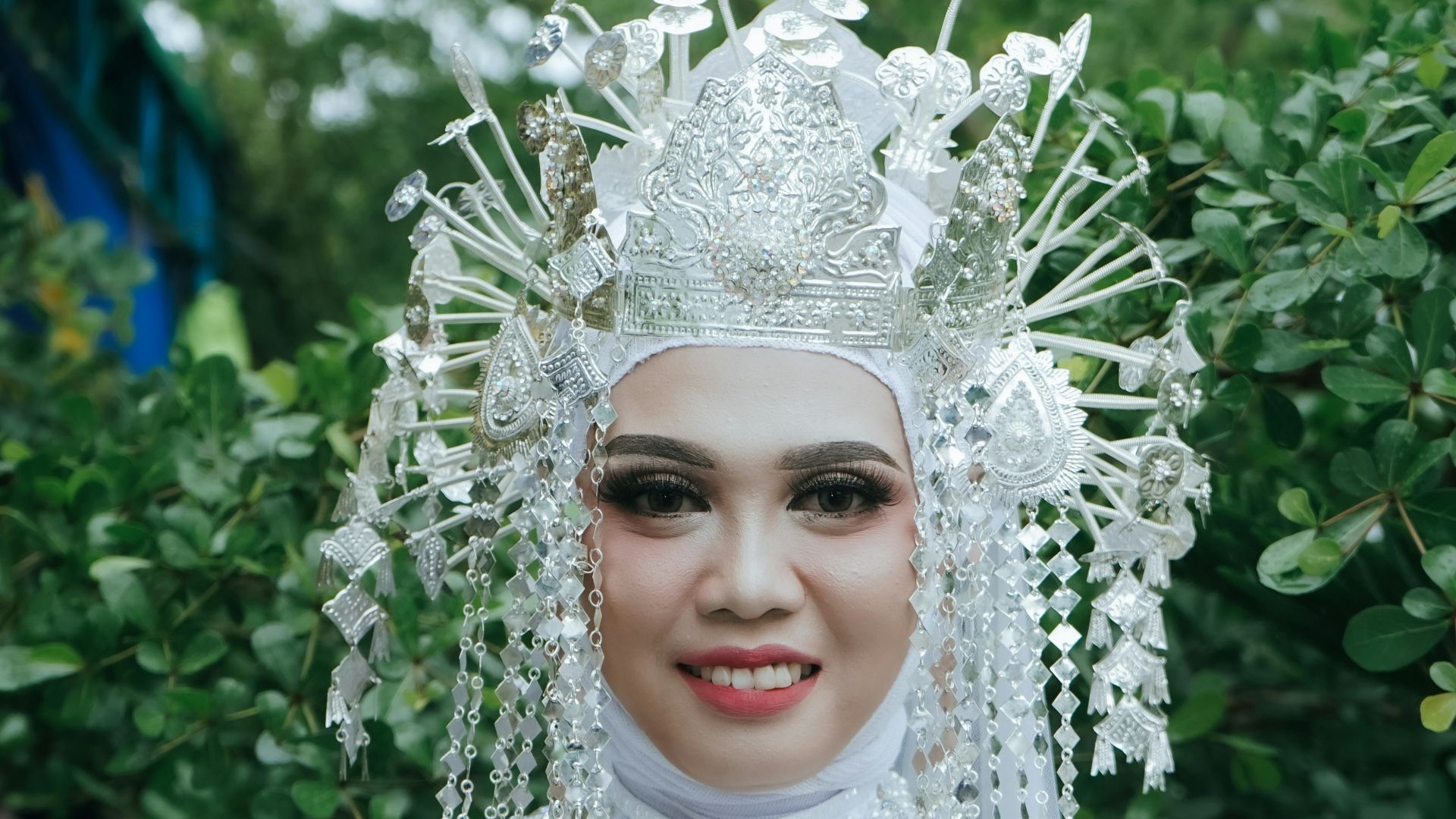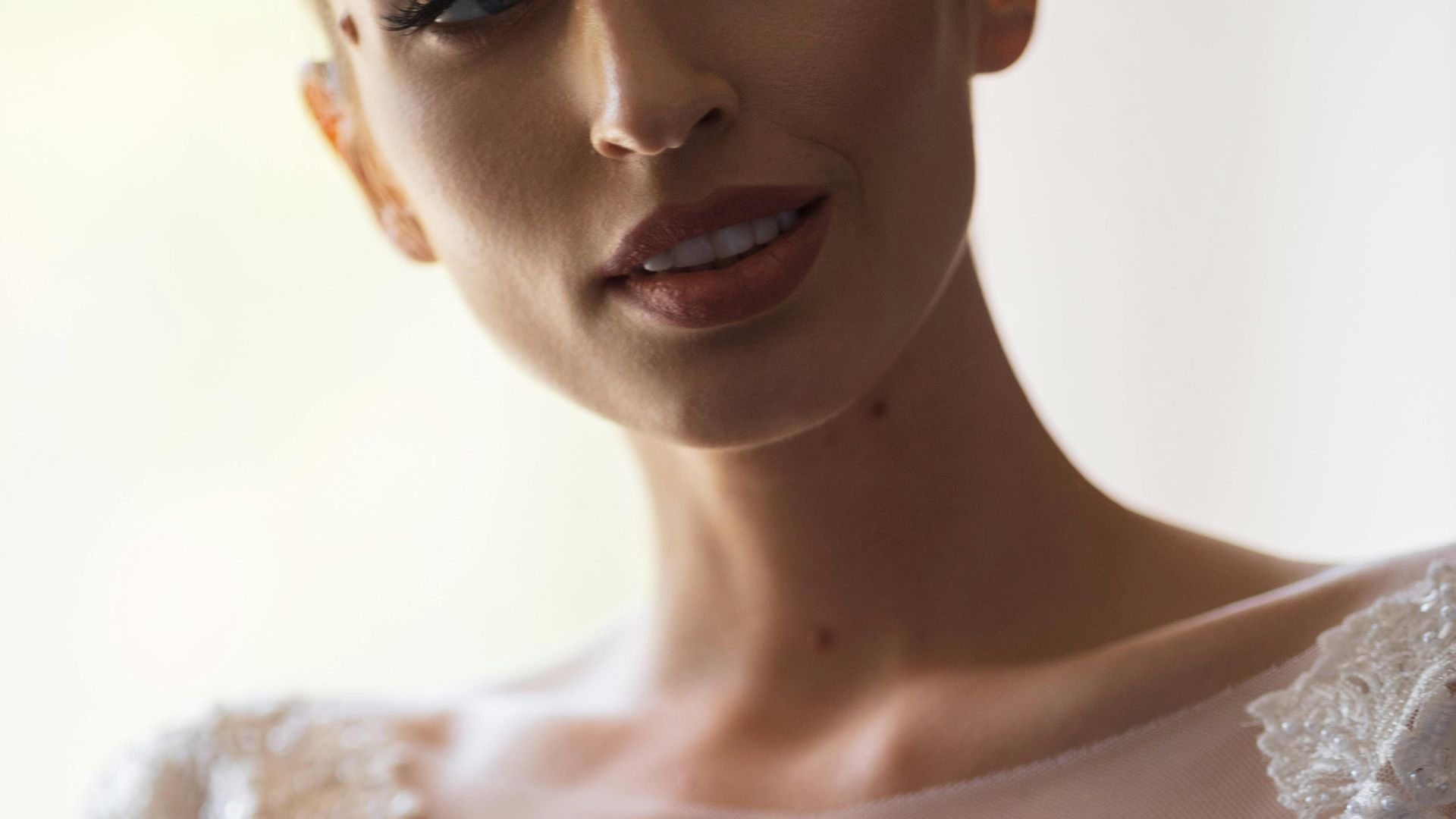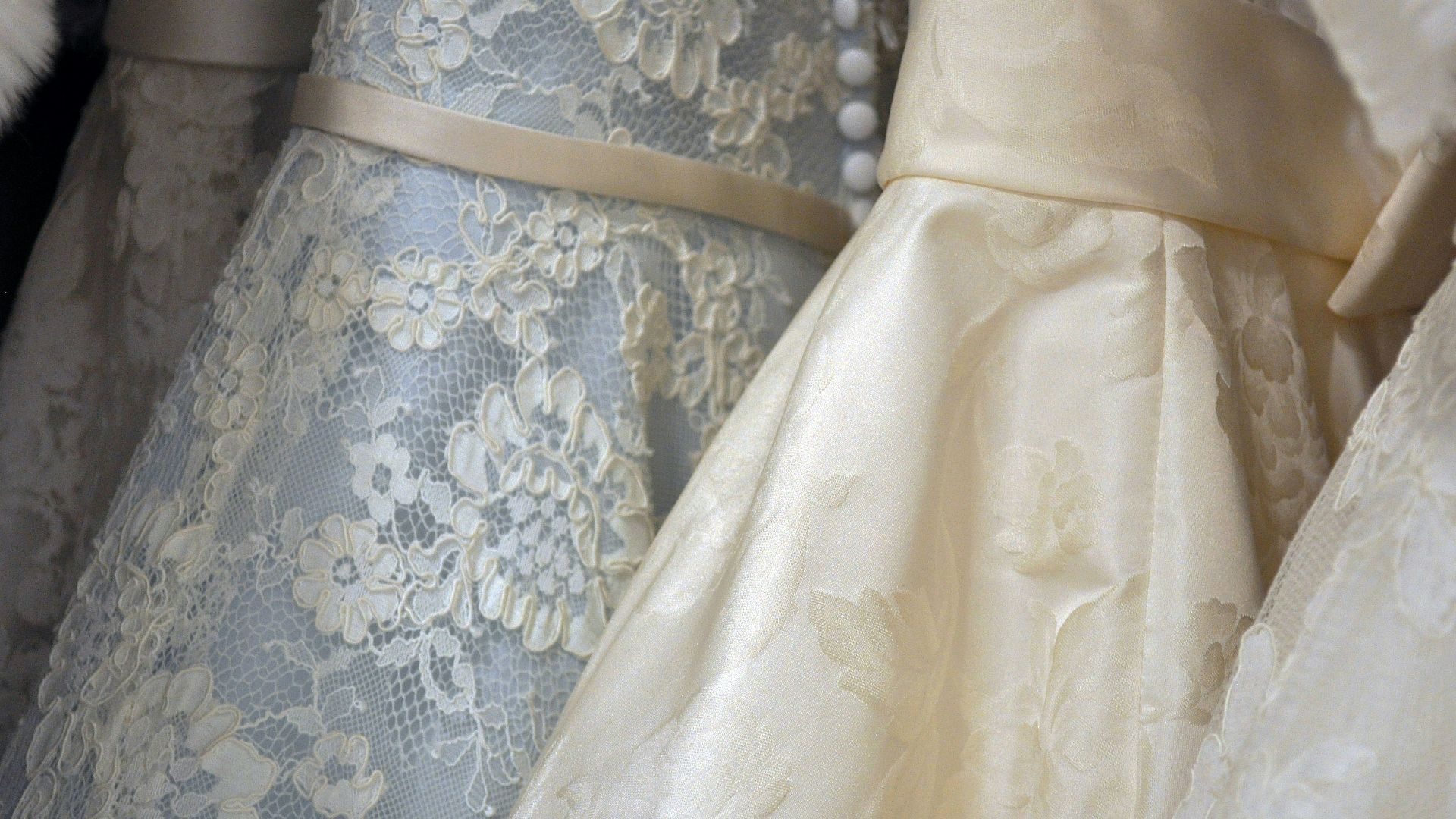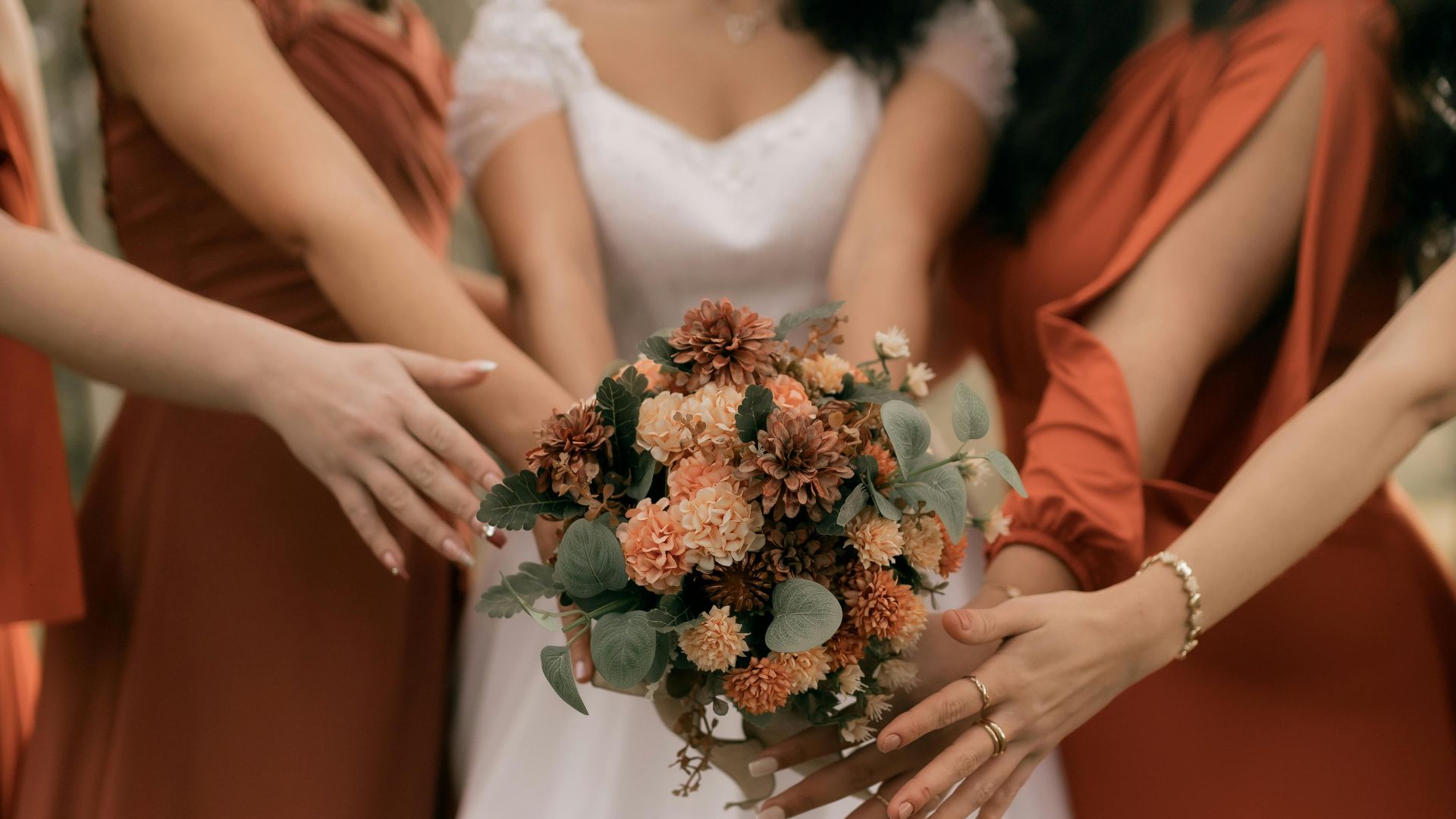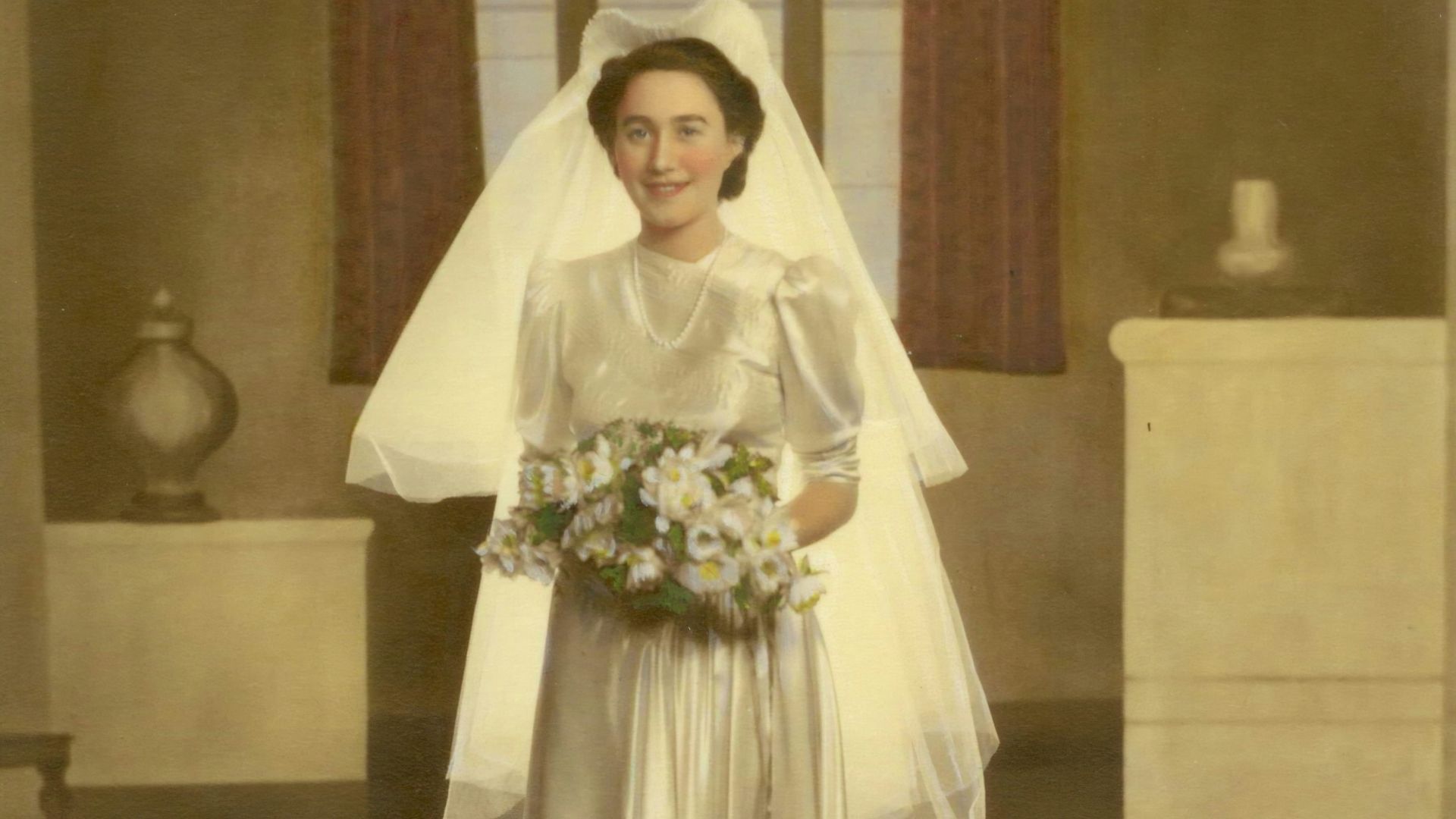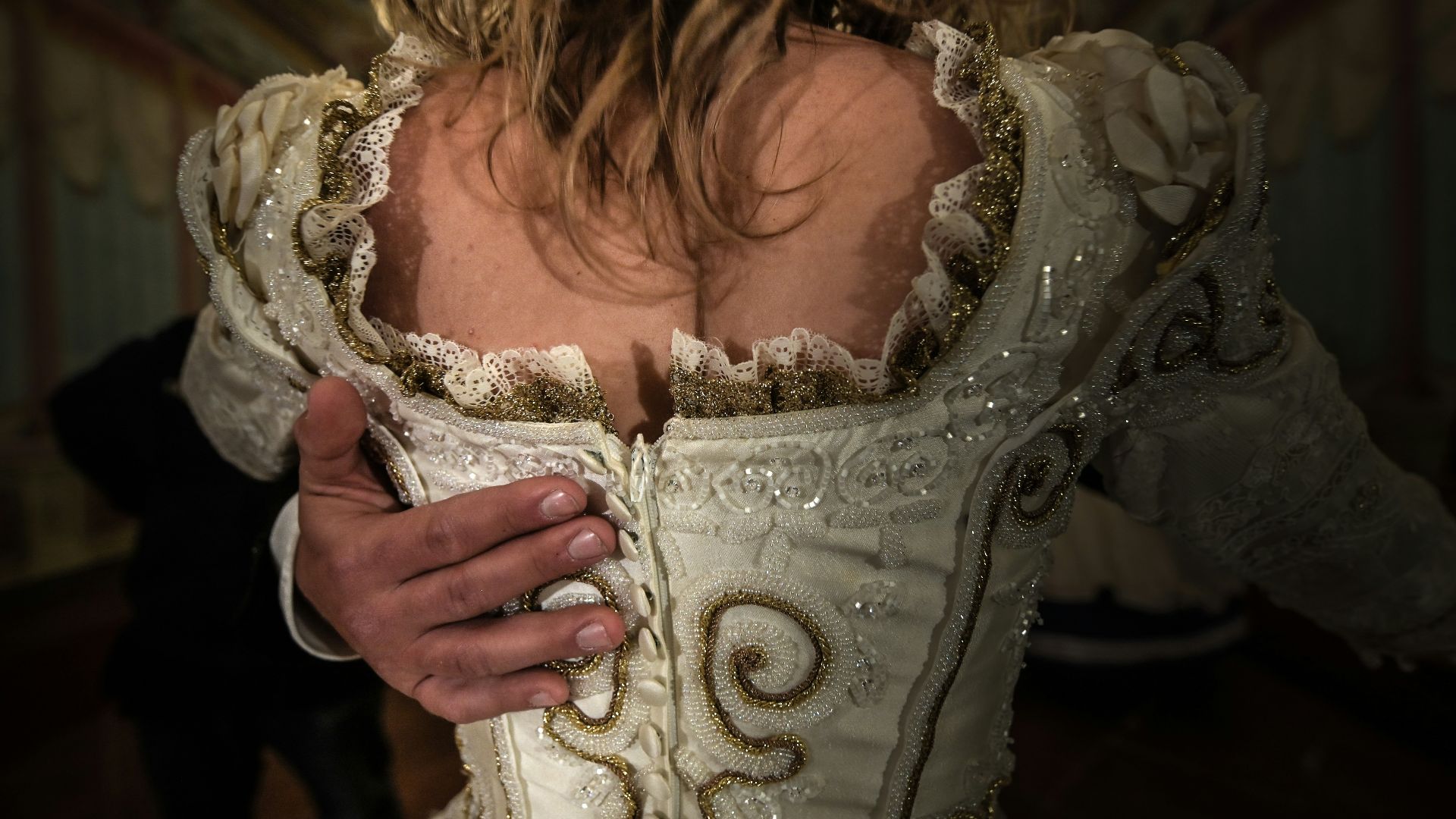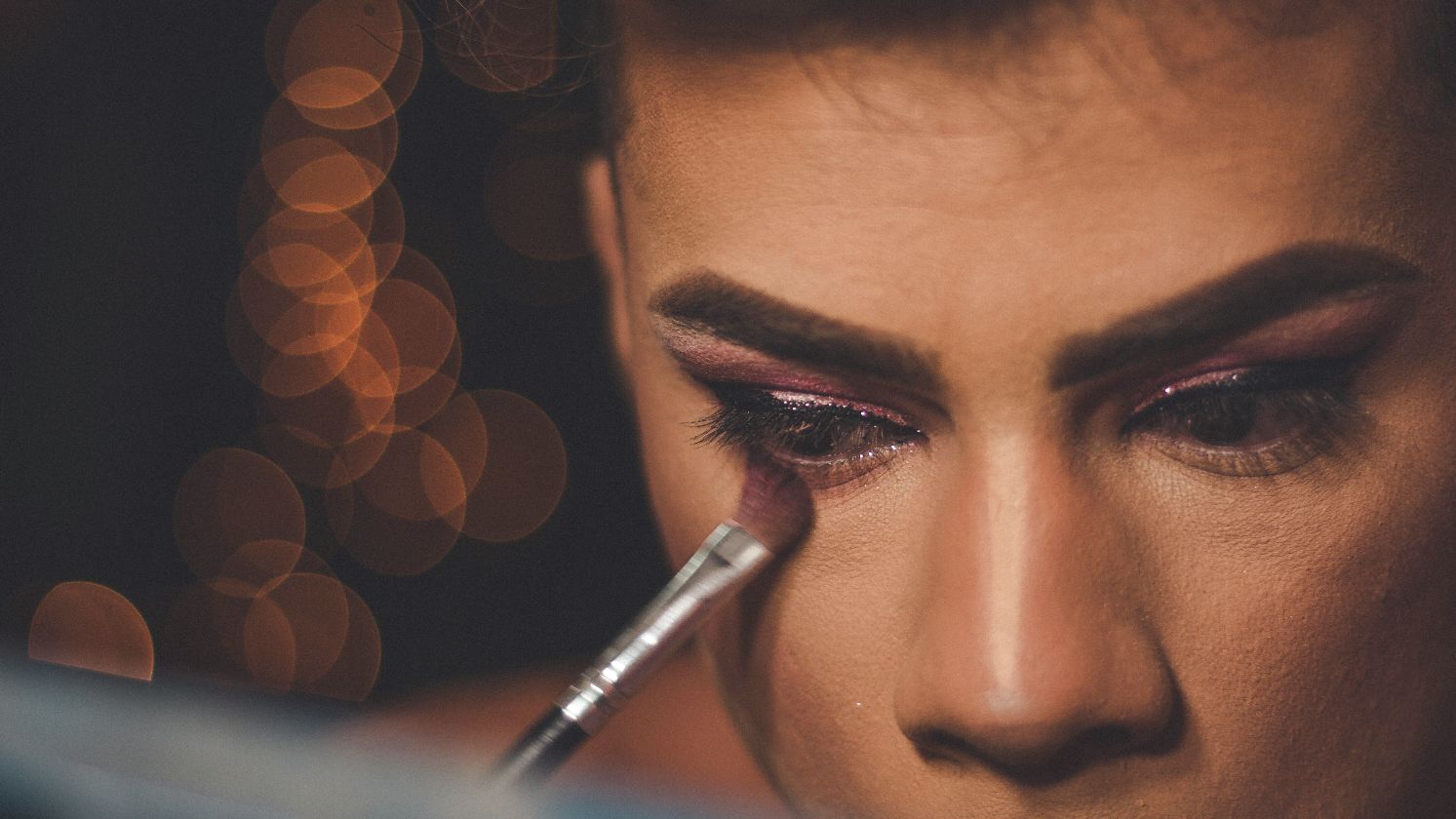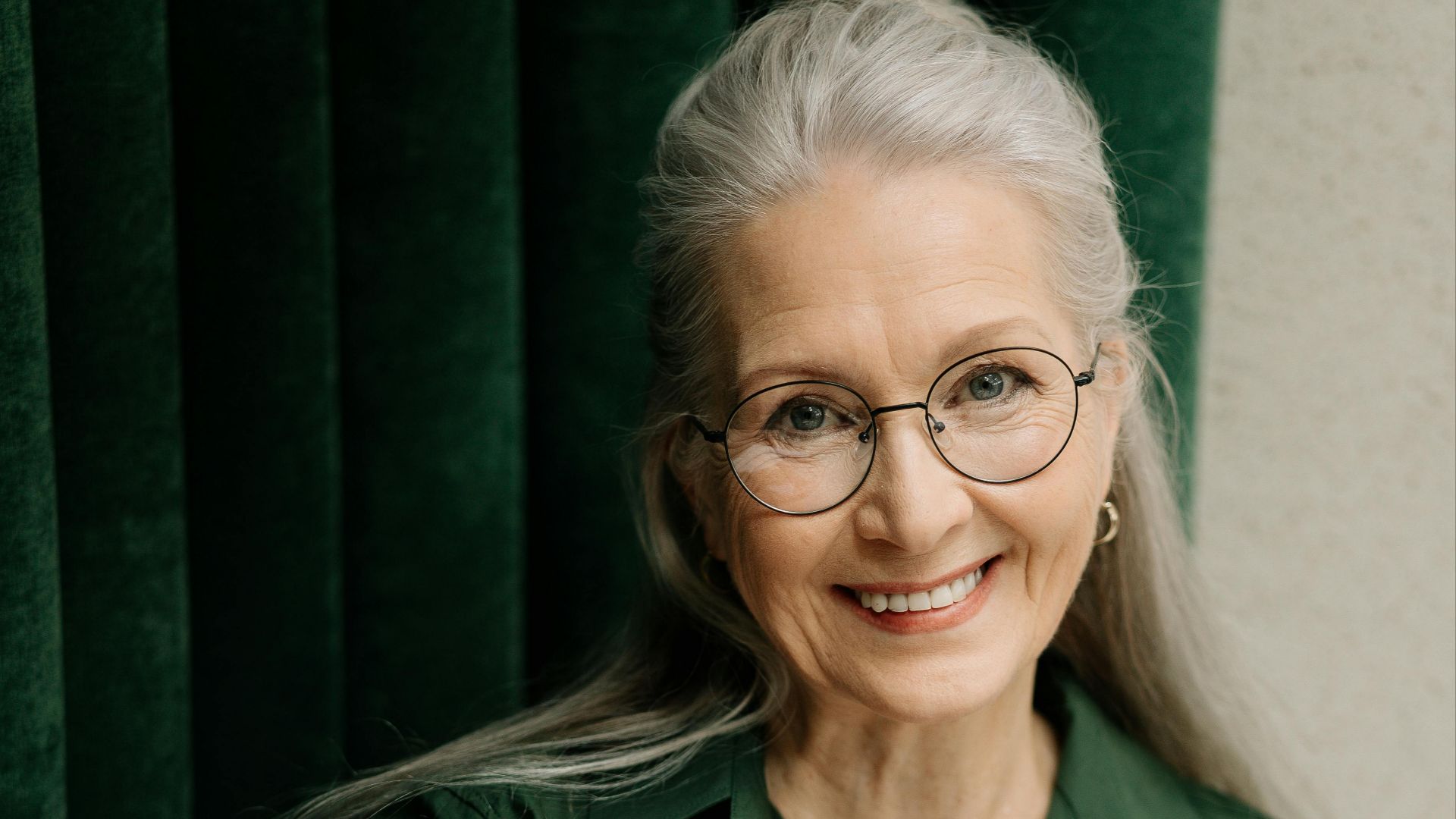Victorian Mourning Dresses Weren't Very Romantic
Just because bridal styles have evolved over the years, it doesn't mean it hasn't been a bumpy ride. Whether it was Elizabethan ruffs or drop-waist sack dresses, lots of era-specific styles were ditched as fashion changed or because they were incredibly uncomfortable. Here are the 20 worst bridal styles throughout the ages.
1. Medieval Metal Headdresses
Being a medieval bride must have been a nightmare. They wore ornate and heavy metal headdresses with jewels, lace, and veils. It weighed several pounds and was visually stunning. However, it was excruciating to wear and made balancing quite challenging.
2. Tudor Farthingale Gowns
Tudor brides wore stiff, cone-shaped skirts called farthingales. These were supported by whale bone or metal hoops. They made an impressive fashion statement, but were impossible to sit in. Brides had to waddle down the aisle and risked toppling over during the reception.
3. Victorian Mourning Dresses
Before white was the official color of bridal wear, many Victorian brides wore dark gowns. While elegant, it was a somber look that closely resembled mourning attire. Some brides even wore black heels and refused to carry flowers.
4. Elizabethan Ruffs
A symbol of Elizabethan fashion was massive, starched ruffs. These were adopted by brides who quickly learned they were a nightmare to wear on their big day. Brides couldn't turn their heads, eat comfortably, or even kiss their groom. Furthermore, sweating turned them into soggy collars.
5. 1920s Drop-Waist Sack Dresses
Flapper-era wedding gowns were revolutionary for their time, but made brides appear shapeless. The straight silhouettes and low waistline erased a woman's natural curves and fit awkwardly on most body types. Pairing it with a skullcap didn't help either.
6. Renaissance Velvet Overload
Brides in the Renaissance often wore heavy velvet, brocade, and ermine. These thick fabrics looked luxurious but were suffocating and restrictive. The massive sleeves and multiple layers made even simple movements challenging.
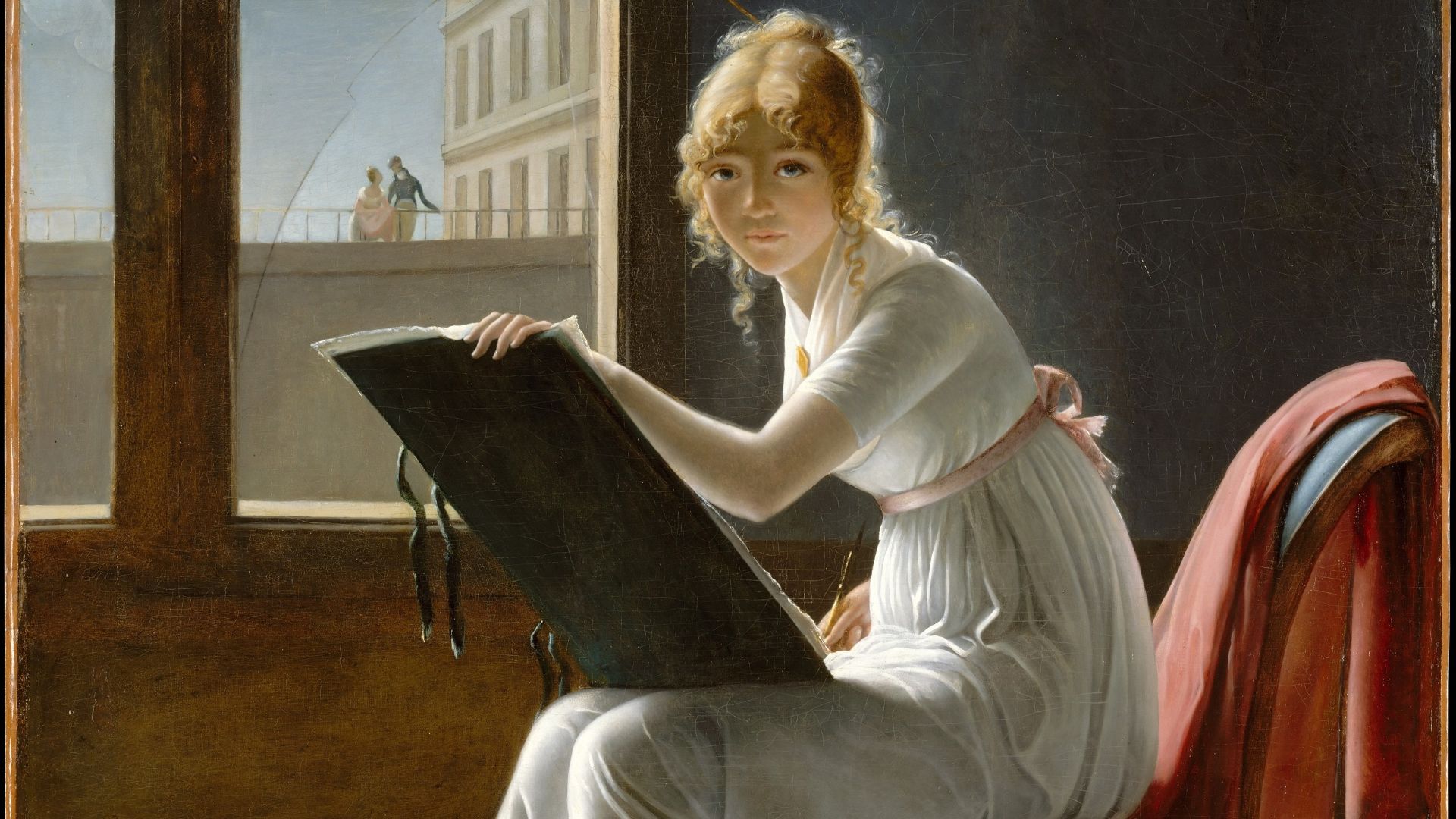 Unknown authorUnknown author on Wikimedia
Unknown authorUnknown author on Wikimedia
7. Edwardian "S" Silhouette Gowns
The "S-bend" corset pushed the chest forward and the hips back to create a severe hourglass figure. It worked to distort posture and restrict breathing, and brides struggled to stand up straight for long ceremonies.
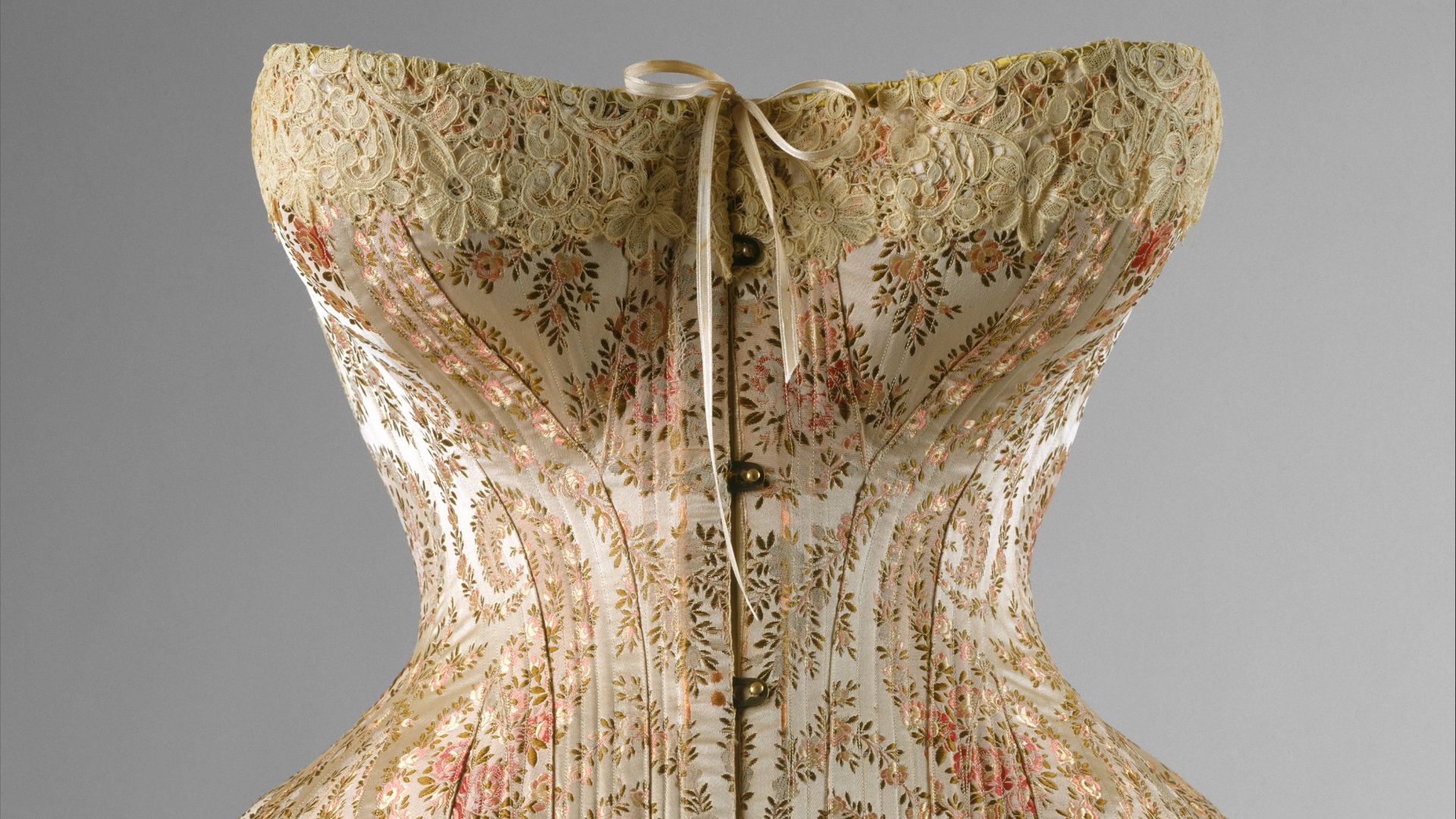 Creator:Maison Léoty on Wikimedia
Creator:Maison Léoty on Wikimedia
8. Hoop Skirts and Crinolines
Victorian brides often wore large hoop skirts that spanned several feet in diameter. A bride in this attire was a fire hazard near a candle, and getting into a carriage was difficult. As you can imagine, it was also impractical for dancing.
9. Space-Age Mini Dresses
In the 1960s, designers tried to fuse fashion with futurism, and the result was disastrous. Brides looked odd in metallic fabrics, plastic headpieces, and miniskirts. This look was a far cry from the more romantic vibe of prior eras.
10. Puffy-Sleeve Explosion
The 1980s loved excess, even to the detriment of brides. Brides wore taffeta, sequins, bows, and layers of lace. 1980s wedding gowns had puffy sleeves that made the shoulders look enormous.
11. Veil Helmets
Some brides in the 1920s paired their drop-waist gowns with metallic mesh headpieces known as "veil helmets". These weird contraptions messed up hairstyles and resulted in an armored look.
12. Georgian Hoop Panniers
This version of the hoop skirt from the 1700s extended several feet from the hips, making it impossible for brides to enter most doorways. They were so wide that guests had trouble standing anywhere near the bride, and sitting in this type of gown was tough.
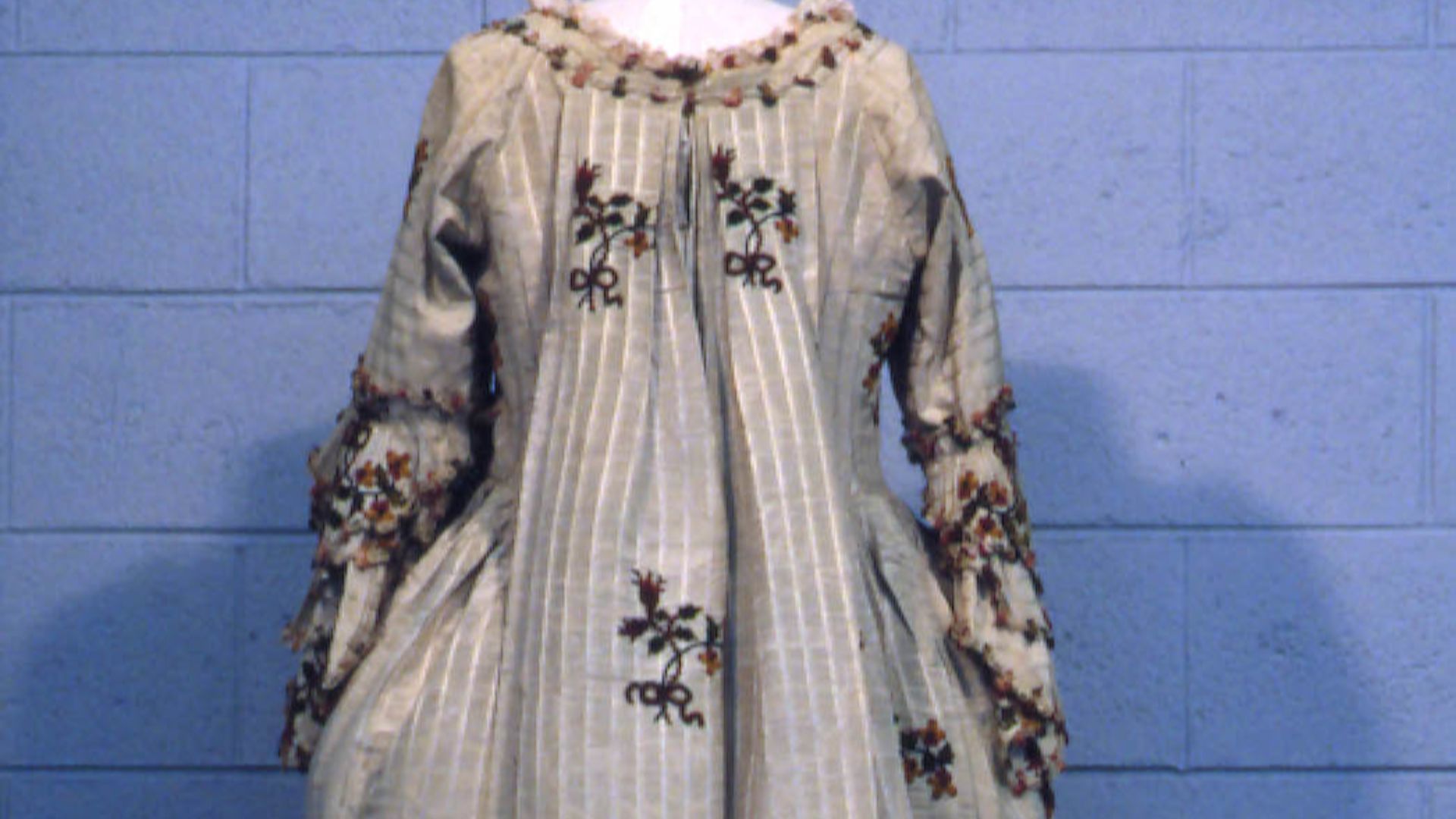 Unknown authorUnknown author on Wikimedia
Unknown authorUnknown author on Wikimedia
13. Sheer Mesh Catwalk Gowns
The 1990s grunge fashion movement collided with the glam era to produce see-through bridal gowns. The corsets were visible, and while they were daring, they often looked unfinished or more appropriate for a nightclub.
14. Baroque Gold Embellishments
Brides of nobility during the 1600s and 1700s wore bridal gowns that were embroidered with gold thread. It sounds impressive, but the weight and stiffness of the fabric bruised a lot of ribs and shoulders. This bridal style was gaudy and physically punishing.
15. Bias-Cut Slip Dresses
These brutal gowns from the 1930s were unforgiving to wear. The clingy fabric made every wrinkle, seam, and curve visible, and it offered no support. Brides had to stand perfectly still to avoid visible lines.
16. Wartime DIY Gowns
In the 1940s, rationing was in effect, and many brides made dresses from parachute silk. It was admirable and resourceful, but the slippery fabric tore and wrinkled easily. Not to mention, hemlines were uneven, and the most prominent colors were grayish white and yellowed cream.
17. Victorian Orange Blossoms and Wax Flowers
Victorian brides wore floral headpieces made of wax-coated blooms. The problem was that the wax melted under heat, leaving an unfortunate sticky residue on hair and faces.
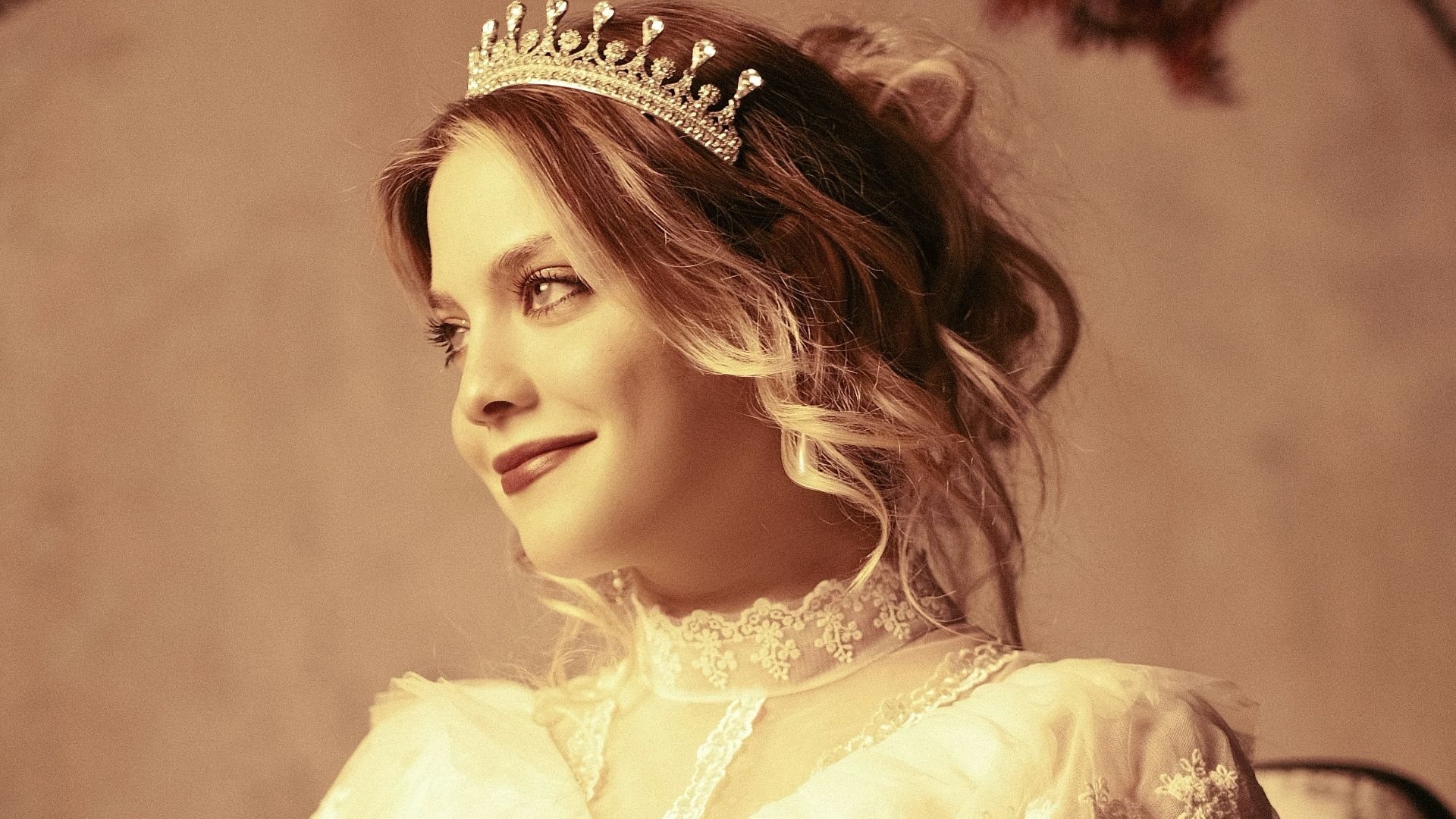 Ali Karimiboroujeni on Unsplash
Ali Karimiboroujeni on Unsplash
18. Corset-and-Tulle Combos
Inspired by celebrity weddings in the early 2000s, a more recent bridal style saw gowns with tight corsets paired with overstuffed tulle skirts. The proportions were cartoonish, and brides had to deal with limited mobility. In fairness, the style photographed well, but looked bulky in person and was incredibly uncomfortable.
19. Rococo Pastel Monstrosities
Brides in the time of Marie Antoinette wore pastel confections with lace, pearls, and ribbons. These bridal gowns took hours to assemble and required assistance to walk and move. The amount of fabric and wigs that were several feet tall made the bride look like a beautiful living sculpture.
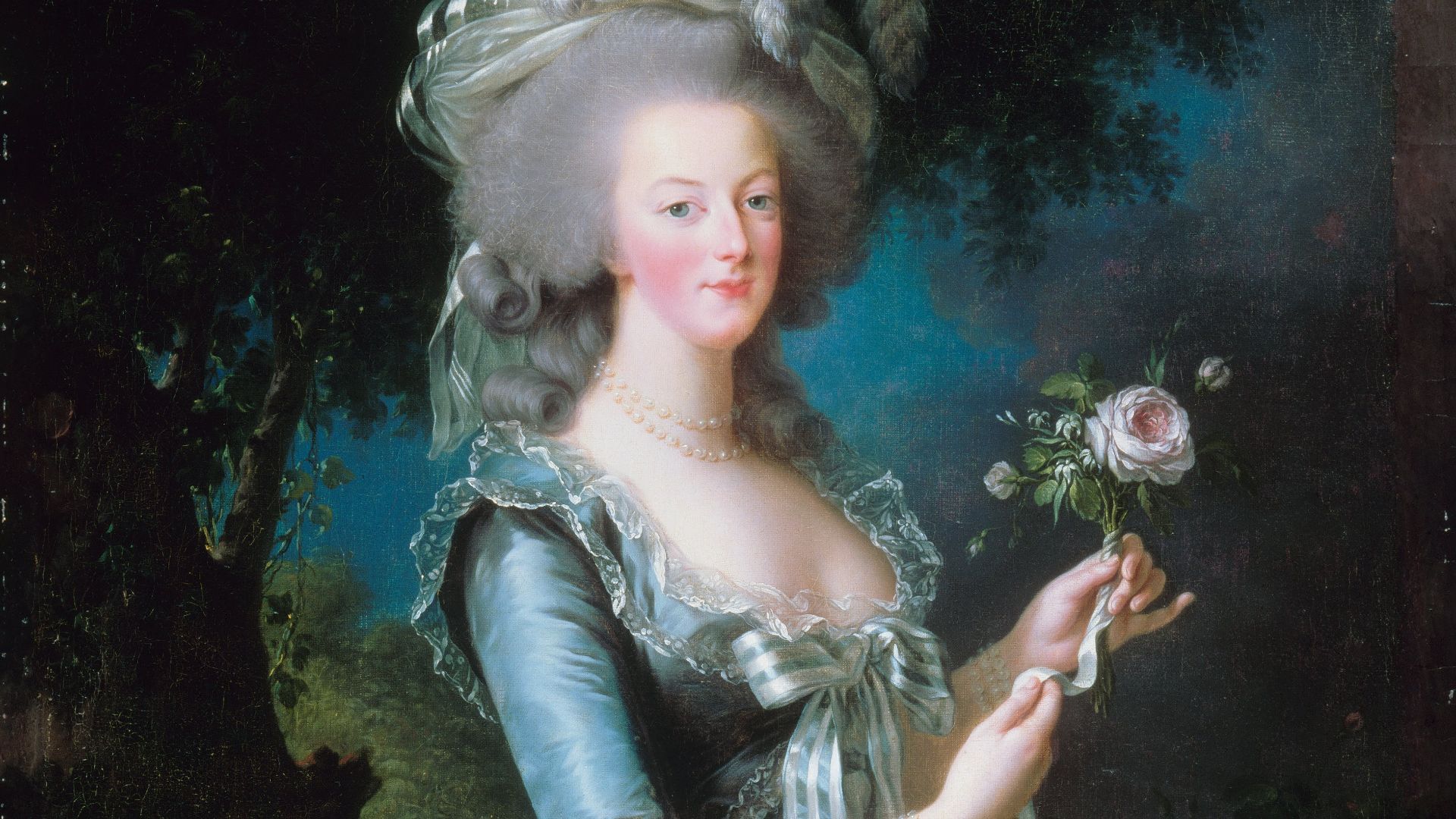 Élisabeth Louise Vigée Le Brun on Wikimedia
Élisabeth Louise Vigée Le Brun on Wikimedia
20. Modern "Nude Illusion" Dresses
Emerging around 2010, the trend of nearly transparent gowns with strategically placed lace was popular but divisive. It was meant to be risky and sexy, but many found it to be tacky and awkward-looking in daylight. Adjusting caused quite a few mishaps, and this trend was out of circulation rather quickly.


